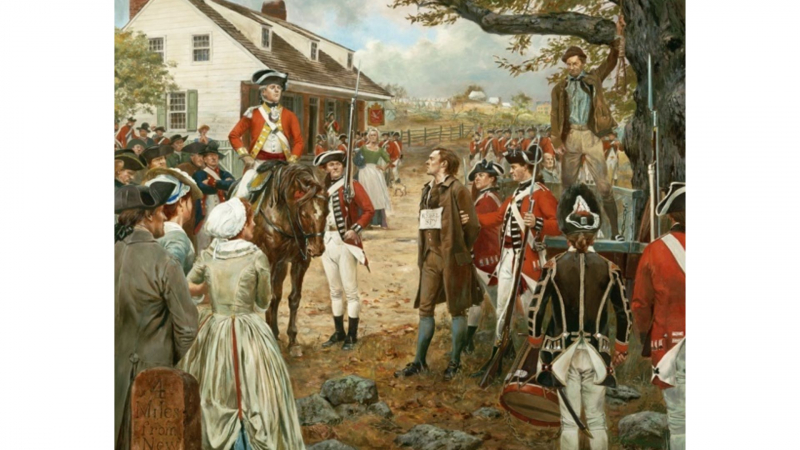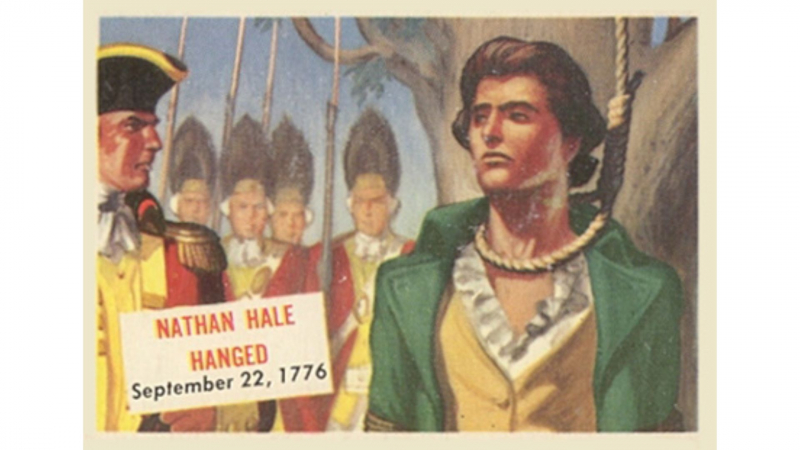How Hale Was Found Out Is Unclear

It's a fascinating Nathan Hale fact that although it is known that Nathan Hale claimed to be a Dutch teacher in order to sneak past British defenses and finally be discovered as a spy, the particular method by which the British learned this is unknown. Consider Tiffany, a Connecticut shopkeeper and Loyalist, wrote a narrative of Hale's capture that was eventually acquired by the Library of Congress. According to Tiffany, Hale was spotted in a bar by Major Robert Rogers of the Queen's Rangers, who recognized him. Rogers and his Rangers captured Hale near Flushing Bay in Queens, New York, after tricking Hale into deserting by posing as a Patriot himself. According to a different account, Samuel Hale, a Loyalist who was Hale's cousin, was the one who disclosed the truth about him.
In a then-rural area of Manhattan, approximately where Beekman Place now stands, British General William Howe had set his headquarters in the Beekman House. This was on a hill between what are now 50th and 51st Streets between First and Second Avenues. Howe reportedly questioned Hale and discovered tangible evidence on him. Rogers gave details regarding the incident. Hale reportedly spent the night at the mansion in a greenhouse, although other versions claim he did so in a bedroom. He asked for a Bible, but his request was turned down. Later, he made a clergyman request. The request was once more rejected. He was given permission by General Howe to send letters to his brother Enoch and to his commanding officer, but the provost marshal, Captain Cunningham, tore them up in front of him the following day. That's all about the fourth fact about Nathan Hale we want to share with you!









